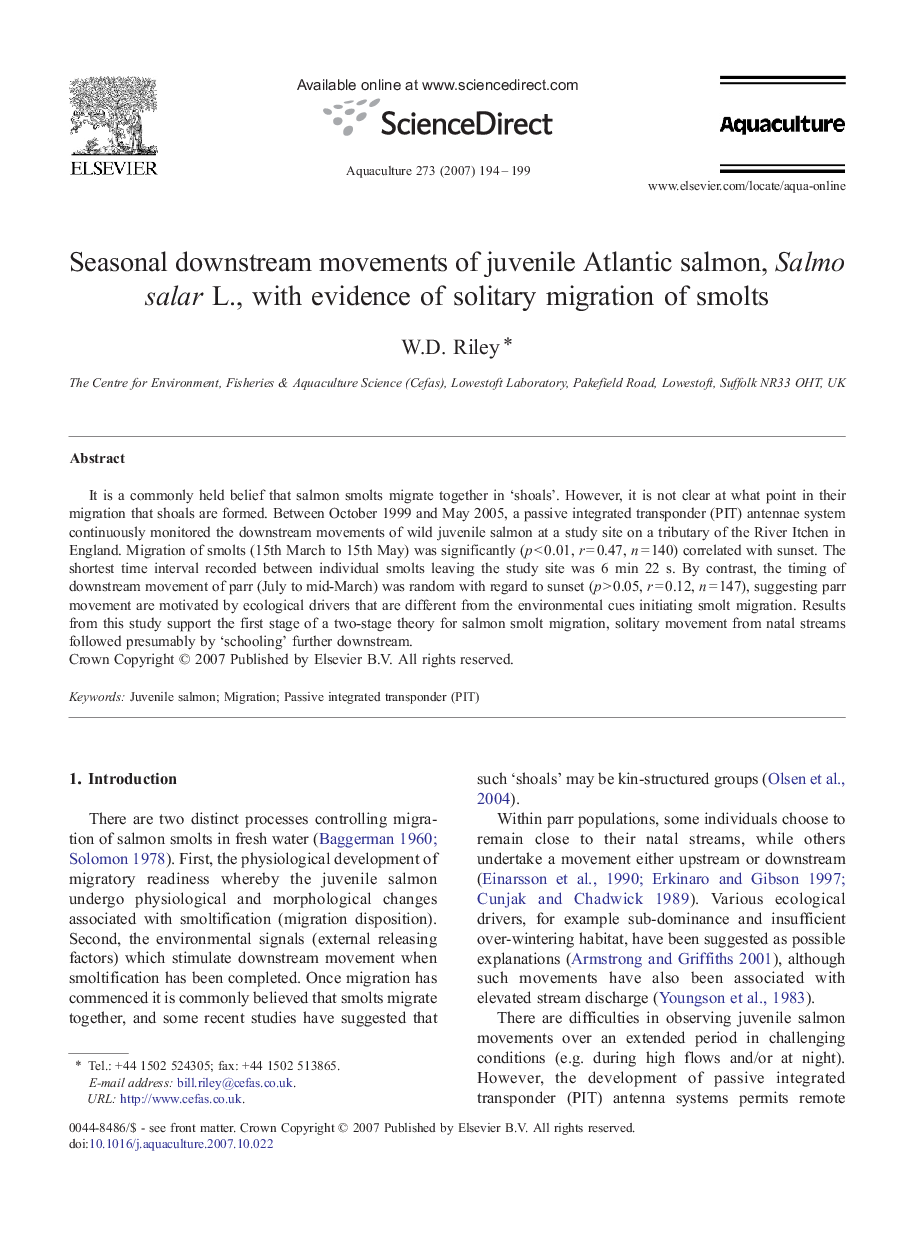| Article ID | Journal | Published Year | Pages | File Type |
|---|---|---|---|---|
| 2425097 | Aquaculture | 2007 | 6 Pages |
It is a commonly held belief that salmon smolts migrate together in ‘shoals’. However, it is not clear at what point in their migration that shoals are formed. Between October 1999 and May 2005, a passive integrated transponder (PIT) antennae system continuously monitored the downstream movements of wild juvenile salmon at a study site on a tributary of the River Itchen in England. Migration of smolts (15th March to 15th May) was significantly (p < 0.01, r = 0.47, n = 140) correlated with sunset. The shortest time interval recorded between individual smolts leaving the study site was 6 min 22 s. By contrast, the timing of downstream movement of parr (July to mid-March) was random with regard to sunset (p > 0.05, r = 0.12, n = 147), suggesting parr movement are motivated by ecological drivers that are different from the environmental cues initiating smolt migration. Results from this study support the first stage of a two-stage theory for salmon smolt migration, solitary movement from natal streams followed presumably by ‘schooling’ further downstream.
